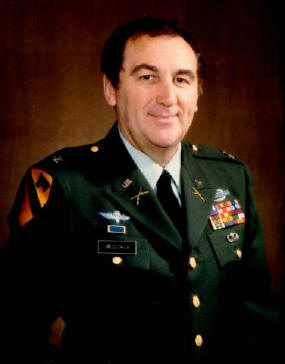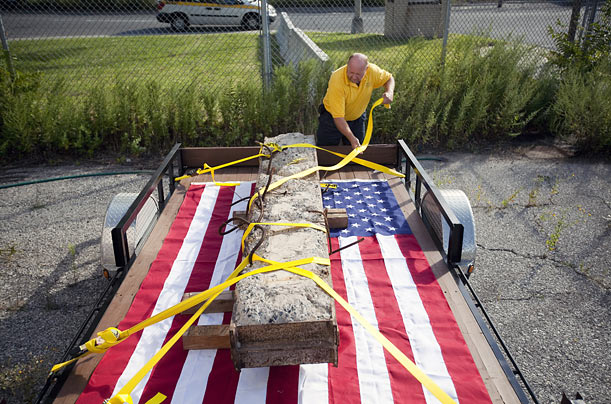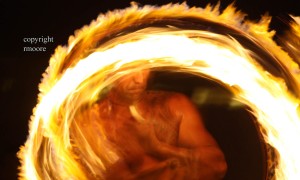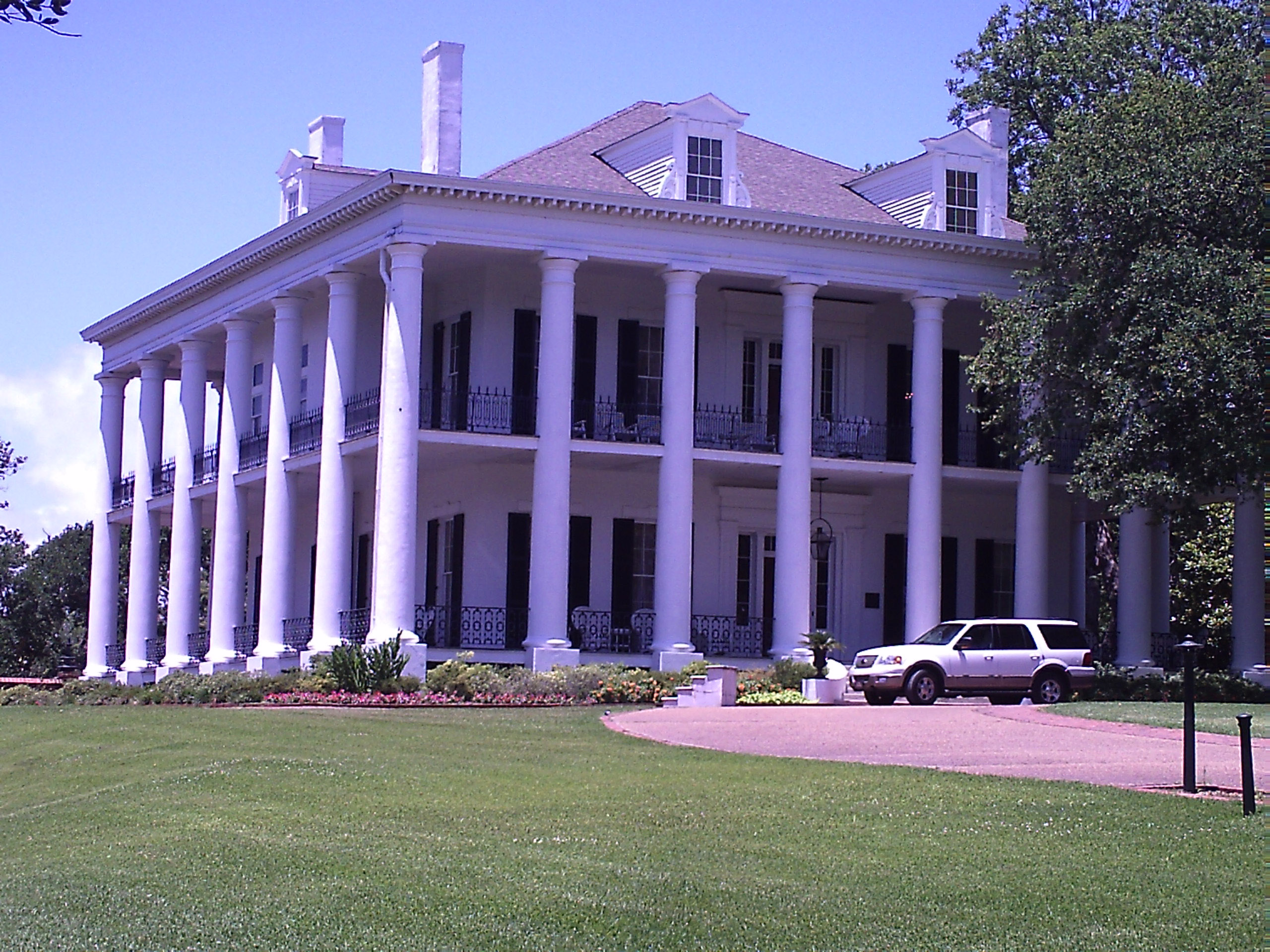Thursday, December 24, 2009
Happy Christmas
Tuesday, October 06, 2009
Toe Jam
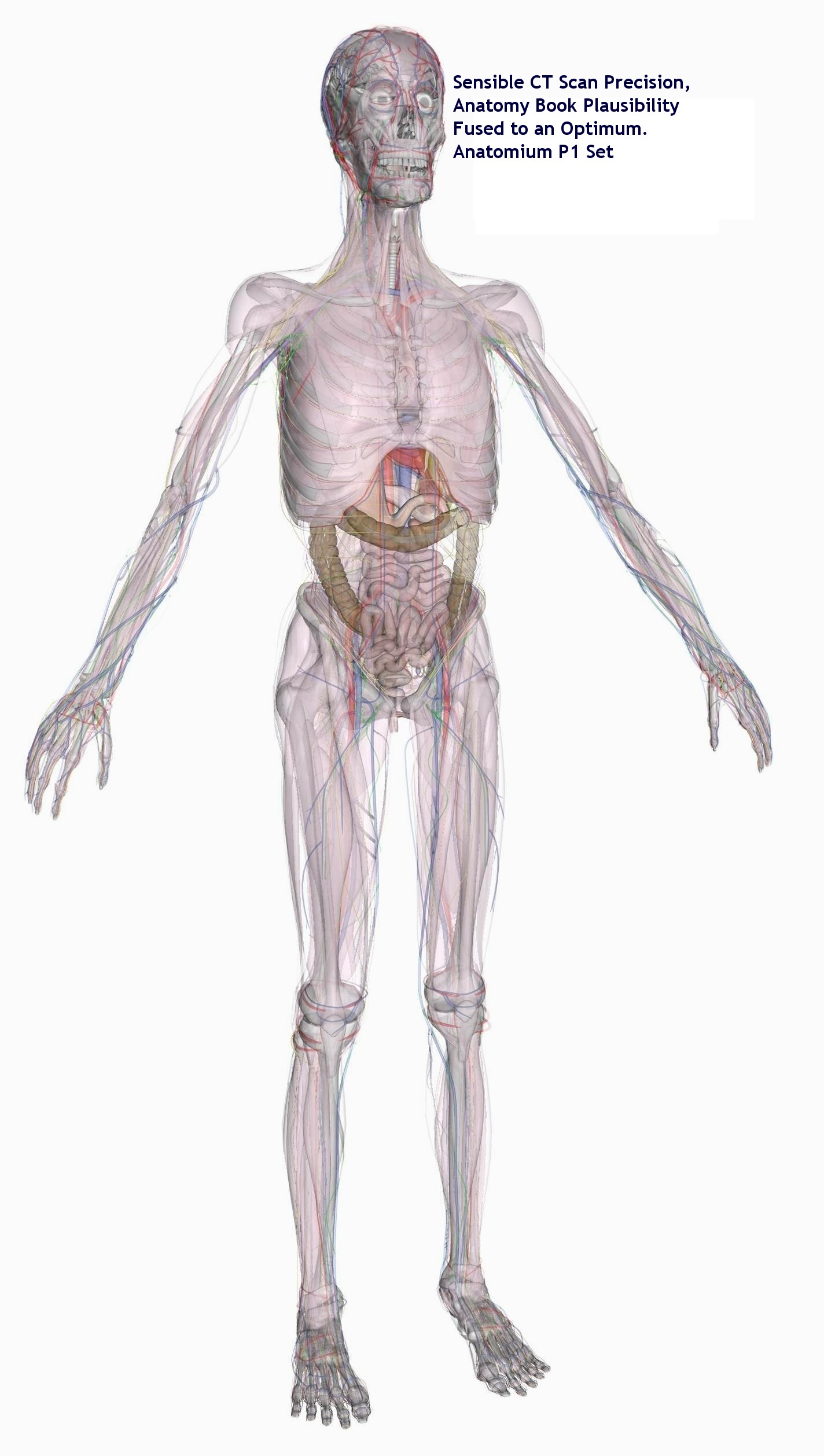 One of the many health problems that people with diabetes face is neuropathy pain. It's one of the reasons why everyone today should pay attention to what your body is telling you. Everything I'm going to say here about my past is still very present today, and in some cases, more so.
One of the many health problems that people with diabetes face is neuropathy pain. It's one of the reasons why everyone today should pay attention to what your body is telling you. Everything I'm going to say here about my past is still very present today, and in some cases, more so.For several years before I was diagnosed with type 2, I had very sensitive skin from my abdomen down to the tips of my toes. Occasionally, I'd get this piercing, throbbing and burning pain in my toes, too. There's no real way to describe it unless you have felt it yourself because all three of those words are mild compared to the real thing.
I tired much easier. My eyes felt like they were hit by a dust storm but nothing was there. I was constantly hungry, including after eating a big meal. I was thirsty more often and I peed more, too. My weight dropped for no reason as my body munched out on fat to feed itself for energy since my metabolism took a permanent vacation from utilizing sugar to help keep my body active. Meanwhile, I was oblivious to it all because I attributed everything to the aches and pains of growing older. While my family and friends watched me lose 40 pounds in a matter of 6 months, I enjoyed the new svelte me while they worried. No problem, I told everyone, my metabolism is changing for the better.
Meanwhile, I was damaging my organs with each passing day, and nothing in the end was for the better.
My skin was so sensitive, I had to be very careful in the shower. The direct flow of water on my mesodermal tissue was painful. The tops of my feet were off-limits because of the excruciating agony from water pressure. I won't even describe the intensity when it hit my you know whats. Direct contact there became an international threat to my manhood.
Meanwhile, like I said, silently, my body was destroying itself from within. Don't get me wrong. I'm not on my deathbed or anything, but there's something I'd like to share with you about a recent experience and it's all about diabetic neuropathy.
To this day, I still feel a constant tingling in my skin. Some days it's more pronounced than others, but it never goes away and most days, I don't pay attention to it anymore. According to the federal government's NIDDK Web site, nerve problems can occur in every organ system, including the digestive tract, heart, and sex organs. Whoopee! Lucky me. Nerves contain a network of cells that carry signals and impulses to the spinal cord and the brain. These are called afferent neurons. They also carry signals away from the central nervous system (CNS), these are called efferent neurons. Enough medical jargon. I just wanted to let you know that along with actually suffering from it, I know a lot about it, too.
As a creature of habit and being left-handed, I always start with my left foot. Safely, my sock was up and it was time to go to town on my right one. As I placed the sock over my toes and began sliding it up my foot toward the ankle, I felt a little pain in one of my toenails. Bear in mind that diabetics should go to a podiatrist to have their toenails cut, but for $75 a visit, I can do that myself, thank you, and I am very careful to never let my nails grow too long. Yes, I am very careful when I clip them. I stopped, let go of my sock, and rubbed my toe. The pain was brief, I felt nothing askew and I continued the sock's journey on the path to its final destination. The pain was gone. No big deal and I shrugged it off.
I must tell you that I also have PAD in my calves and ankles, so I have to be careful about what types of socks I wear. At the same time it, it reminds you of one of the many other problems associated with diabetes.
I don't remember what I did that day. I probably had errands to run and sometimes, I catch up with old friends at Spatz, the neighborhood bar in Winter Park, where I sip on water while they drink. Watching people drink booze and smoke cigarettes doesn't bother me in the least. Smoking was extremely detrimental to my health and I will never do it again. This month marks 2 years away from the cancer sticks. I only wish I could have patted myself on my back a lot earlier.
Anyway, I got home, went about my business and at bedtime, I sat on the bed, kicked off the shoes and began to unroll my socks; one at a time, starting with my left foot. I told you I am a creature of habit. As I peeled off the right sock, I noticed something immediately. That toe I felt pain in earlier was now coated with dried blood. Hmm. What's this? Upon closer examination, I saw that the toenail was split down the middle up to the root and the right half was completely torn off. Gonesville. I rubbed my toe. How did that happen? How did I not know it?
As you cringe in horror over what I had done to myself, here's the clincher. I didn't even know it. I felt no pain. How's that for diabetic neuropathy? How's that for dying nerves?
You see, it's very important that we take care of ourselves when we are young. Sure, I never thought I'd be in this shape when I should be relatively healthy and carefree at 57, but it does happen. There were signs coming my way I never paid any attention to, like what I described earlier. I was aware that my nails were becoming more and more brittle over time, especially the ones on my toes, but I was stupid or naive or both. My mother has lived with the disease for over 25 years now. Does it run in your family? Think about that food you're eating. Think about my toe. In 2006, nearly 21 million Americans had diabetes. The number grows by leaps and bounds daily. Do you want to be one of them?
Friday, September 11, 2009
Rick Rescorla - An American Hero
Originally published in 2006, this is my account of but one man. I plan on posting this every September 11, in honor of Rick and all who perished that day. I will do this until I can do it no more.
Rick Rescorla was born in England. He enlisted in the U.S. Army in 1963 and retired as a colonel in 1990. Rick was a bonafide hero of the Vietnam war. In 1965, at the Ia Drang Valley battles, Lt. Gen. Hal Moore described him as "the best platoon leader I ever saw." Rescorla's men nicknamed him "Hard Core" for his bravery in battle. His heroism was documented and highlighted in the 2002 movie "We Were Soldiers" from the book "We Were Soldiers Once... and Young" co-written by Gen. Moore.
Since 1985, he worked in corporate security, subsequently becoming Vice President of Security for Morgan-Stanley/Dean-Witter, the largest tenant in the World Trade Center. After the 1993 attack, he trained all employees to evacuate the building. He maintained a structured, quarterly drill carried out by all staff to orderly get out. He is the man who predicted 9/11. Please see The Richard C. Rescorla Memorial Foundation.
On that fateful day, he safely evacuated all 2,800 Morgan-Stanley/Dean-Witter employees but himself and a few of his security staff. After doing his job, he returned to rescue others still inside. These were not even his people. They were all his people. He was last seen heading up the stairs of the tenth floor of the collapsing WTC 2. His remains have not been recovered. He left a wife and two children. This man is widely recognized as being solely responsible for saving over 3,000 lives. Is it of any importance that he became an American citizen after Vietnam?
Rick Rescorla is but one hero who perished that fateful day, but what a man he was and what a soul he has that will and should live forever in the hearts and minds of all who cherish freedom. All over the world.
See also: Calegion Post 149
The Port Authority of New York and New Jersey, which holds approximately 2,000 pieces from the original WTC site in a hangar at JFK airport, has recently stepped up its efforts to find permanent homes for the artifacts. Any town or city, anywhere in the world, can apply for permission to take away a piece from the collection and build their own memorial around it. In this photo, a piece destined to become part of a memorial in York, Pennsylvania is secured to the bed of a trailer.
Monday, September 07, 2009
Blood Curdling
Every three months I have to go to my clinic to have blood drawn for various test, including an A1c, which determines my blood glucose level over that period of time. This way, I can adjust some of the medications I take, if necessary. This is an account of my Thursday morning visit.
In the video, I recorded the lab nurse’s handiwork. In the editing application I turned off the actual audio of us talking and dubbed in music and assorted sound effects. In other words, none of the sound is real, but the video is. So is my arm.
x
Monday, August 31, 2009
My video test
I bought a new Sony video camera recently. Now, I am practicing shooting footage and adding credits. Hopefully, my style will improve with experience and I will be able to take on more challenging endeavors.
You can also watch a slightly larger version at YouTube.
Wednesday, August 26, 2009
Saturday, July 25, 2009
Is the world too much for us?
By Rachelle Moore
Two questions:
Do you think the world is too much with us? William Wordsworth thought so at the beginning of the 19th century when he was lamenting the growth of materialism and the loss of the appreciation for nature. What would he think about this post industrial world? Globalization. Digitization. Not only do we have our own personal pain and trials by fire, we can be entertained by the pain and victimization of others.
Does the material world seem out of control, and personal mid-life crises seem to be on the rise? We know the term “mid-life” is fraught with misconceptions. We have crises at every age level.
So, is the material world too much with you? If you answer YES – Good! Are you thinking about a moderate life crisis? If, YES – Good! You are ready for the life altering realm of art and an appreciation or greater appreciation for the world of nature. Let’s give Wordsworth some support here.
Art is therapeutic for just about everything. I became my own therapist through art and I didn’t charge myself by the hour. During a dark period of my life, I decided I needed to build up my ego by conquering one of my major fears:swimming in water over my head or where I can’t see the bottom. So I learned how to scuba dive (I’m now certified at the rescue diver level.) Yes this is drastic, but drastic is what’s needed. Scuba diving enlarged my world – reefs, exotic fishes, Caribbean islands, gorgeous men in skin tight wet suits. Most important for me was that diving led to a new hobby – photography. My life crisis persona became that of an artist. To an artist, the world can never be too much with us. Too many of us, the world is a dynamic wonderland.
If scuba diving is too extreme, try snorkeling with a cheap underwater camera. You won’t even notice that the backs of your legs will look like the inside of a can of Hunt’s tomato sauce. A few photos will open up a keen interest in the underwater ecosystem. I felt exhilarated when I captured the image of a graceful manta ray and a close up of a huge turtle with little yellow fishes in the background. Included here is an image (My Sweet Lord) of the statue of Christ in John Pennekamp Park in Key Largo, Florida. You don’t have to be religious to appreciate this stunning statue turned reef.
After numerous underwater pictures, I got a cheap digital land camera and looked to the sky for my next conquest. Many of us are so busy with our daily life responsibilities that we only notice the sky on rare occasions. Here is an image (Sunset) of a sunset at the Pocono Mountains in Pennsylvania. I continued to take pictures and explore new worlds with a camera. Even when I discarded the duds (plenty of those) I was amazed at what I had learned.
One day at work (now we all know the phrase “one day” signals a major change in our lives) a colleague asked me to learn Adobe Photoshop so I could do more work on my organization’s Web site. After explaining the basics of imaging software and Photoshop in particular, my response was, “You mean it’s a toy?”
I immediately saw a new creative opportunity for my photography. Is it a challenge? Yes, but not impossible to learn on your own. My self help art therapy sessions went into high gear. My first thrill was loading my images into the camera and retrieving them in Photoshop without pulling my hair out or freezing my hard drive. My second thrill was manipulating and changing the images into something else entirely. If you want new challenges in your life as a therapeutic measure try photography.
When I moved to Hawaii on retirement, I bought a very expensive digital camera with a telephoto and macro lenses as a gift to myself. One day (here I go again with the “one day” business) my neighbor saw my framed photos and invited me to enter the next village art show. When I stopped laughing at myself for thinking that someone was calling me an artist, I accepted.
On the day of the show, when people started to arrive and browse the collections, I felt like I did when I went to 100 feet during a dive in the Caymans.Was I going to get out this alive? Well, of all things, one of my Photoshop manipulations (Ethnicity) sold. One of the more accomplished artists at the show came over to me and said, “Congratulations, you are now a professional artist.”
No psychologist could have done what this experience has done for me. Art is therapeutic because it provides new worlds to explore, conquer, and appreciate. You can discover and hone skills you never thought you had.
The artist who congratulated me at the show is now my instructor. I was so inspired by her watercolors, I thought I would try to learn something new again. I’m now taking lessons in drawing and watercolor painting. I probably will never include my primitive watercolors in an art show, but that’s not the point. The point is I’m drawing and painting, and again seeing the world from a totally new perspective.
Here are the images I mentioned and the techniques used in Photoshop. Contact me at rm31998@gmail.com if you are interested in any of them.
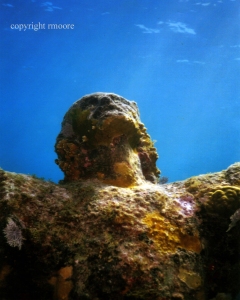 My Sweet Lord – the color was enhanced and the contrast adjusted.
My Sweet Lord – the color was enhanced and the contrast adjusted.
 Sunset - only the size was changed – honestly!
Sunset - only the size was changed – honestly!
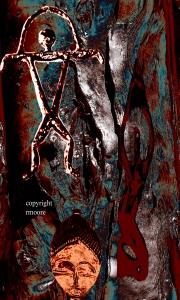 Ethnicity –this is a combination of 4 pictures in the form of a collage, the background is the bark of a tree, the figures are some items I have around the house. The background was manipulated in the gradient tool, and the colors were significantly sharpened.
Ethnicity –this is a combination of 4 pictures in the form of a collage, the background is the bark of a tree, the figures are some items I have around the house. The background was manipulated in the gradient tool, and the colors were significantly sharpened.
 Palm Trees -this is picture of a clump of trees outside my house and I manipulated the image by subjugating it to a variety of filters, trying to make it look like a watercolor painting.
Palm Trees -this is picture of a clump of trees outside my house and I manipulated the image by subjugating it to a variety of filters, trying to make it look like a watercolor painting.
For more information
Contact me at rm31998@gmail.com
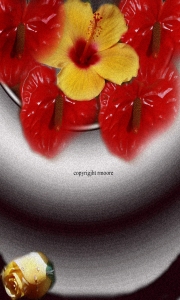 White Vase – the only thing real here are the flowers, I constructed the vase by grading a new file with black and white colors, then distorted the pixels until a bowl was formed, then I inserted the images of the flowers.
White Vase – the only thing real here are the flowers, I constructed the vase by grading a new file with black and white colors, then distorted the pixels until a bowl was formed, then I inserted the images of the flowers.
x
x
x
x
Ring Of Fire – the contrast was adjusted to make the flames brighter; the blurred effect was caused by using the sport action mode on the camera.
Reflecting Palms - I lightened the image to show the palm leaves which are underwater.
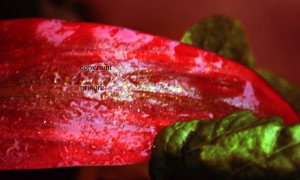 Red Leaf – this is macro-photography and the red in the leaf was enhanced to minimize the reflecting light.
Red Leaf – this is macro-photography and the red in the leaf was enhanced to minimize the reflecting light.
x
x
x
Rachelle Moore is a media and culture enthusiast presently living on the Big Island of Hawaii. She taught media and culture courses during her 38 years at Binghamton University where she served as a research librarian, instructor and faculty master for Mountainview residential college. Moore graduated from Le Moyen College and earned graduated degrees in Library Science and Anthropology from Syracuse University and Binghamton University respectively. The Endicott, New York native’s research interests still include the impact of digital media on culture and human development. In her free time, she enjoys spending time with her two children and three grandchildren, travel, photography, scuba diving, and watercolor painting.
x
Thursday, June 25, 2009
Real Southern Routes
There was a land of Cavaliers and Cotton Fields called the "Old South." Here in this pretty world, Gallantry took its last bow. Here was the last ever to be seen of Knights and their Ladies Fair, of Master and of Slave. Look for it only in books, for it is no more than a dream remembered, a Civilization gone with the wind...
- From the opening of the film Gone with the Wind (1939)
For Elizabeth
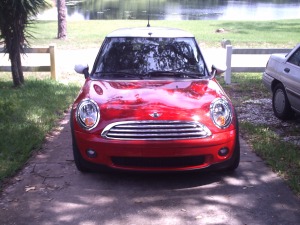 Four years ago, my best friend, Stewart Bacheler, and I took a road trip from Florida to Houston to visit my sister and her husband, who had just undergone a bone marrow transplant for AML. Fortunately, that transplant was successful and he remains in remission today. We had a great trip and vowed to do it again one day. Stew and I have known each other since before high school. On Friday morning, June 12, we took ourselves up on that vow and ventured out to visit Enterprise, Alabama and Natchez, Mississippi. This time, we tried to avoid the Interstates by taking U.S. Highways and a few back roads instead, at least on the way out of town.
Four years ago, my best friend, Stewart Bacheler, and I took a road trip from Florida to Houston to visit my sister and her husband, who had just undergone a bone marrow transplant for AML. Fortunately, that transplant was successful and he remains in remission today. We had a great trip and vowed to do it again one day. Stew and I have known each other since before high school. On Friday morning, June 12, we took ourselves up on that vow and ventured out to visit Enterprise, Alabama and Natchez, Mississippi. This time, we tried to avoid the Interstates by taking U.S. Highways and a few back roads instead, at least on the way out of town.
Now, before you ask me why Enterprise, let me tell you that during our last trip, we weren't hauling any drugs. This time, between the two of us, a mere four years later, I'm surprised every drug-sniffing dog throughout the deep south wasn't chasing after us, although every one of them came with a doctor's prescription. Except for supplements. You name it, we had it for heart, cholesterol, blood pressure and, suffice it to say, prostate problems. Something told me we would be stopping more often because of our... going problem. Fortunately, there were plenty of convenience stores for when we felt the urge.
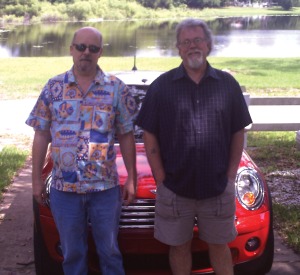 When we first discussed the trip, I was amenable to going anywhere. I said there must be places you'd like to see that your wife is not all that interested in. I mean, every wife and husband are allowed to continue having their own interests. Sure, he said, and we spent the entire time in strip clubs we read about on-line. Just kidding, because we never actually set foot in one. To be truthful, Stew spent some Army time at Fort Rucker in Enterprise, home of the world famous Boll Weevil monument in the town square. Word also has it that Enterprise is the Peanut Capital of the World, or so Stew and some of the natives told me upon arriving. I also found out that the monument is the only one in the world erected to honor an insect, an agricultural pest to be more precise. It seems that by 1918, farmers were losing entire cotton crops to the pesky critters and an "enterprising" businessman saw this as an opportunity to convert the area to peanut farming. The rest is history. In Coffee County, no less. Today, the statue stands as a testament to the power of positive thinking by turning bad news into a happy ending. That little bug put Enterprise on the map. By the way, I'm the younger looking guy on the left side of the picture.
When we first discussed the trip, I was amenable to going anywhere. I said there must be places you'd like to see that your wife is not all that interested in. I mean, every wife and husband are allowed to continue having their own interests. Sure, he said, and we spent the entire time in strip clubs we read about on-line. Just kidding, because we never actually set foot in one. To be truthful, Stew spent some Army time at Fort Rucker in Enterprise, home of the world famous Boll Weevil monument in the town square. Word also has it that Enterprise is the Peanut Capital of the World, or so Stew and some of the natives told me upon arriving. I also found out that the monument is the only one in the world erected to honor an insect, an agricultural pest to be more precise. It seems that by 1918, farmers were losing entire cotton crops to the pesky critters and an "enterprising" businessman saw this as an opportunity to convert the area to peanut farming. The rest is history. In Coffee County, no less. Today, the statue stands as a testament to the power of positive thinking by turning bad news into a happy ending. That little bug put Enterprise on the map. By the way, I'm the younger looking guy on the left side of the picture.
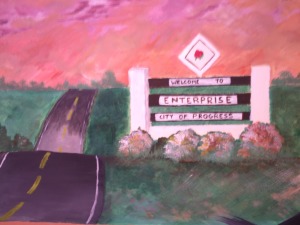
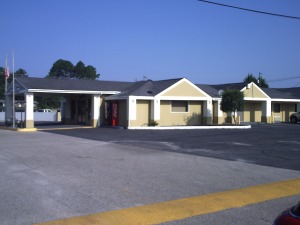
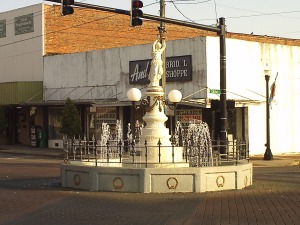 When we rolled into town, we took a few side trips to see some of Stew's old haunts. Before we left he checked out some places to stay and had a printout of motels nearby. I made a few phone calls to get a good deal and we ended up staying at the Roasted Peanut Motel, where every guest gets a jar of its World
When we rolled into town, we took a few side trips to see some of Stew's old haunts. Before we left he checked out some places to stay and had a printout of motels nearby. I made a few phone calls to get a good deal and we ended up staying at the Roasted Peanut Motel, where every guest gets a jar of its World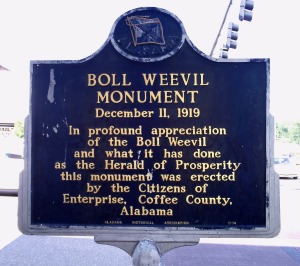 Famous Delicious Boll Weevil Peanut Butter, chunky or smooth - your choice! Actually, that's not true. We stayed at Americas Best Value Inn & Suites and we didn't get any peanut butter, chunky or otherwise. It's a very pleasant place and the folks who run it are extremely friendly and accommodating. As a matter of fact, all along the trip everyone was very friendly and I will personally vouch for the intangible quality often referred to as Southern Hospitality.
Famous Delicious Boll Weevil Peanut Butter, chunky or smooth - your choice! Actually, that's not true. We stayed at Americas Best Value Inn & Suites and we didn't get any peanut butter, chunky or otherwise. It's a very pleasant place and the folks who run it are extremely friendly and accommodating. As a matter of fact, all along the trip everyone was very friendly and I will personally vouch for the intangible quality often referred to as Southern Hospitality.
While in town we needed a place to relax and have dinner since that was about the time we arrived. Stewart used to eat at a Mexican restaurant but he figured it would be long gone by now, 35 years later. He drove in the general vicinity and found theMorgan Square Shopping Mall. "Yes, it was in here..." We took a peek.
Nope, it was gone, but in it's place was the Italian Euro Bistro, so we decided to give it a try. It was the funniest menu, too, because it was mostly made up of Italian and German dishes. I've never seen a restaurant that served cuisines so vastly apart from each other, but it was a good place and our server, Michelle, was very friendly to a fault because every time we spoke to her she called us SIR. Here was a pretty girl, a former Army MP from Hawaii, now living in Alabama. It helps that her military family retired in Enterprise. If you ever find the place, please say hello for me and don't forget to try the garlic knots.
The next morning, we set out to find us some peanut farmers. Of course, we had to eat first and darn if there wasn't a Waffle House right down the street from where we stayed. We sauntered in and bellied up to the counter to order some grub. There was a good old boy sitting a couple of stools away and he overheard us talking about Stew's military background and my brother's visits to Iraq. Bruce was his name and he was a nice fellow. Born and raised in Enterprise, he works for Anfab, some sort of military provider, like helicopter pads and stuff I'm not familiar with. As we were leaving, I told him to be on the lookout for my article on peanut trees.
"Peanut trees?" he exclaimed.
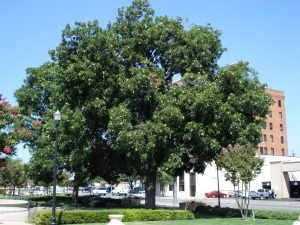 "Yes, peanut trees." Unfortunately, ol' Bruce is not Internet savvy, so he won't be able to read about the trees we did end up taking a gander at, but he knew they were there and he was the one who told us where to go, all hush-like. The funny thing is, when we got there we couldn't take any pictures of the trees because they have something to do with some sort of military application - peanut cluster bombs and top secret bio-fuels for jets - but the kind farmer did give us directions to a tree we would be passing on our way out of town. We stopped and I snapped a picture. Peculiarly, it looks very similar to a pecan tree except it has peanuts on it. Unfortunately, we didn't come during the harvest season and none of the goobers left on the tree were worth eating. Oh well, next time.
"Yes, peanut trees." Unfortunately, ol' Bruce is not Internet savvy, so he won't be able to read about the trees we did end up taking a gander at, but he knew they were there and he was the one who told us where to go, all hush-like. The funny thing is, when we got there we couldn't take any pictures of the trees because they have something to do with some sort of military application - peanut cluster bombs and top secret bio-fuels for jets - but the kind farmer did give us directions to a tree we would be passing on our way out of town. We stopped and I snapped a picture. Peculiarly, it looks very similar to a pecan tree except it has peanuts on it. Unfortunately, we didn't come during the harvest season and none of the goobers left on the tree were worth eating. Oh well, next time.
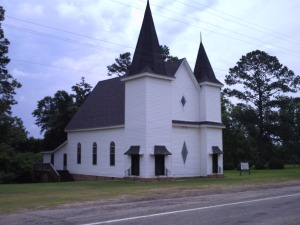
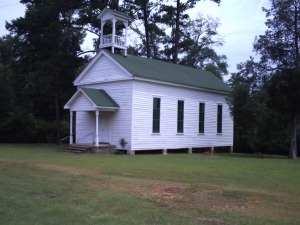 When we left town, we took U.S. 84 all the way to Natchez, Mississippi, figuring it would be the most scenic route. It was pretty, alright, and there were nice, rolling hills along the way with lots of green trees to look at. Along that route, we passed two side by side churches and stopped. I liked them for
When we left town, we took U.S. 84 all the way to Natchez, Mississippi, figuring it would be the most scenic route. It was pretty, alright, and there were nice, rolling hills along the way with lots of green trees to look at. Along that route, we passed two side by side churches and stopped. I liked them for 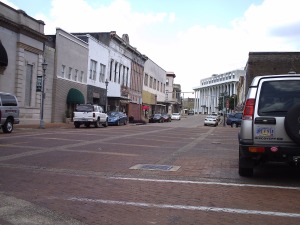
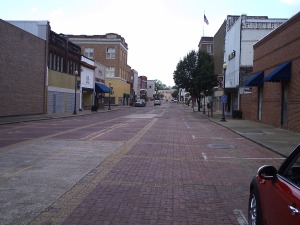 their quaint and comfortable look. They had a prurient appeal to me, having grown up in a small church in rural New Jersey, where my grandfather preached.
their quaint and comfortable look. They had a prurient appeal to me, having grown up in a small church in rural New Jersey, where my grandfather preached.
As we were passing through Laurel, Mississippi, we stopped and I took a couple of pictures that kind of tell you the story of how malls and big box stores have hurt businesses in downtown areas throughout the years. Of course, the economic downturn hasn't helped, either. Quite obviously, this was once a thriving town and I could just feel the presence of a very proud spirit in this community, still filled with hope and the American dream. As we got back in the car and slowly drove off, a nice lady asked us if she could help us find anything. Her friendly demeanor spoke volumes and it was a testament to the tenacious nature of the town's citizens.
 One of the interesting things we noticed along the route were road signs that warned us that we were entering police jurisdictions because I never knew there were any areas of the country that didn't have that luxury. Nowhere did I see any signs that said NO POLICE ALLOWED! There were also signs that said we were entering city limits and I'll be darned if I could even find a town in sight. About a half hour or so before we got to Natchez, we saw a working oil rig-a-ma-jig, whatever it's called.
One of the interesting things we noticed along the route were road signs that warned us that we were entering police jurisdictions because I never knew there were any areas of the country that didn't have that luxury. Nowhere did I see any signs that said NO POLICE ALLOWED! There were also signs that said we were entering city limits and I'll be darned if I could even find a town in sight. About a half hour or so before we got to Natchez, we saw a working oil rig-a-ma-jig, whatever it's called.
It was a long journey across most of Alabama and all of Mississippi, but after about seven and a half hours, we wheeled into Natchez, home to many beautiful antebellum homes. I've always been impressed by Greek Revival, Classical Revival and Federal style architecture, probably from my high school days and when I watched Gone with the Wind on a History class field trip, but also because it reminds me of the Civil War, something that's always fascinated me. There's a certain sadness about the south I just can't explain other than to say that old plantations and slaves were a part of our American heritage and growing up in the north, I never got to see cotton fields and other things indigenous to the south, like magnolia trees. It was a sad day when this war ripped at our very fabric and unfortunately, someone had to lose. Fortunately, pockets in the south are still rich in culture and Natchez stands among the best.
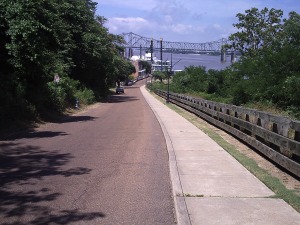
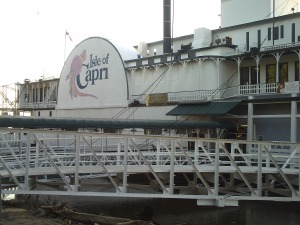
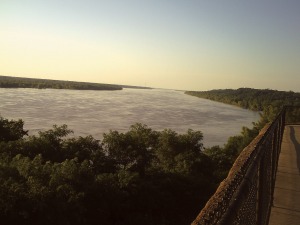 As we entered the city, we bee lined it to the Mississippi River along the western edge. All of Natchez is quite a bit higher than the river and we found a road leading down to a little area bustling with activity. There were houses, storefronts, and the Isle of Capri Casino Hotel. Since we didn't
As we entered the city, we bee lined it to the Mississippi River along the western edge. All of Natchez is quite a bit higher than the river and we found a road leading down to a little area bustling with activity. There were houses, storefronts, and the Isle of Capri Casino Hotel. Since we didn't 
 come to gamble, we didn't. The casino is on the water because of state laws prohibiting them on land and it is designed to look like an old fashioned steamboat or paddlewheel. Real steamboats still prowl the river, but not while we were there.
come to gamble, we didn't. The casino is on the water because of state laws prohibiting them on land and it is designed to look like an old fashioned steamboat or paddlewheel. Real steamboats still prowl the river, but not while we were there.
The great Mississippi is a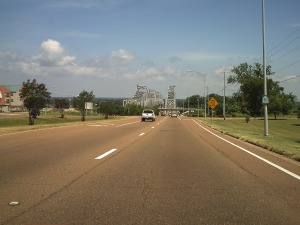 majestic river. It's the second largest in the country with a length of 2,320 miles from its source in Lake Itasca in Minnesota to its mouth in the Gulf of Mexico, near New Orleans. I guess it's always inspired me because of its size and the fact that I could be stepping in it in Natchez while my brother is doing the same thing in St. Louis. Growing up reading Mark Twain may have had something to do with it, too, Huck Finn and all. Here are a few pictures I took. We took the bridge from Natchez to Vidalia, Louisiana just for kicks. Plus, I wanted to view Natchez from the other side. After taking a peek, we stopped for gas. I asked the girl behind the counter what there was of interest to see in Vidalia. I knew that the onions with the same name come from a county in Georgia.
majestic river. It's the second largest in the country with a length of 2,320 miles from its source in Lake Itasca in Minnesota to its mouth in the Gulf of Mexico, near New Orleans. I guess it's always inspired me because of its size and the fact that I could be stepping in it in Natchez while my brother is doing the same thing in St. Louis. Growing up reading Mark Twain may have had something to do with it, too, Huck Finn and all. Here are a few pictures I took. We took the bridge from Natchez to Vidalia, Louisiana just for kicks. Plus, I wanted to view Natchez from the other side. After taking a peek, we stopped for gas. I asked the girl behind the counter what there was of interest to see in Vidalia. I knew that the onions with the same name come from a county in Georgia.
"Nothing."
"Nothing?"
"No, nothing."
"Oh. What about the onions? Do you sell them here in town?" I knew it was a trick question, but she was right on top of it.
"Yeah. When they're shipped in we do." I took her word for it that Vidalia, Louisiana was not much of a town and I figured she'd just as soon move away if only her gallant prince would ride in to buy a bag of out of state onions.
"Oh well, have a nice day," and off I went. Alas, I wasn't her prince.
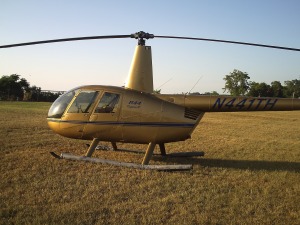
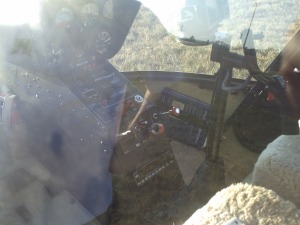
 One of the things we noticed by the river was a helicopter, but it looked a lot more like a whirlybird. It was right there in the open. No pilot was in sight and it looked ripe for the taking."C'mon, Stew. Let's take her for a ride."
One of the things we noticed by the river was a helicopter, but it looked a lot more like a whirlybird. It was right there in the open. No pilot was in sight and it looked ripe for the taking."C'mon, Stew. Let's take her for a ride."
"Oh, I don't know about that. You've never flown one of these things before."
"Look, they're really quite simple. Let's go." We hopped inside and I revved her up. Stewart remembered me from my days of playing Army, but that was 37 years ago.
How I managed to start the thing, let alone fly it and land, is beyond me, but we got safely back to the right spot and no one ever noticed it was missing, but I must admit there's one less bird flying around Natchez.
Now, it was time to eat dinner, despite both of us losing our appetites. I had picked up a nice, glossy visitor's guide earlier in the day and noticed a place called Fat Mama's Tamales. It was a fun place with good looking women and very good food to match. I had the signature tamales and they were delicious. It looked like a regular hangout kind of joint and that's always a good thing. It did make me wonder why there wasn't a place in town called Natchez Nachos, though.
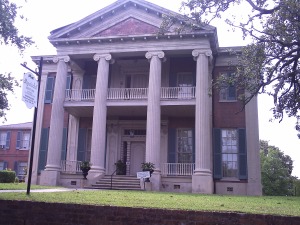
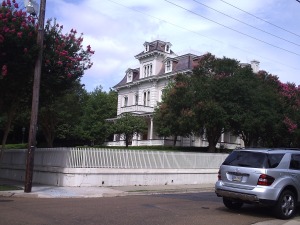
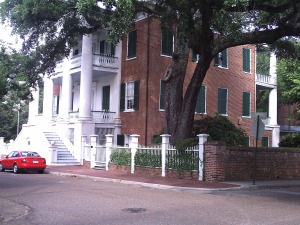 The next morning we had already decided to see some of Natchez's finer sites - the houses. I also noticed on the visitors guide that there were two cemeteries adjacent to each other, above town and overlooking the Mississippi River in some areas. That was added to our list of things to do, along with
The next morning we had already decided to see some of Natchez's finer sites - the houses. I also noticed on the visitors guide that there were two cemeteries adjacent to each other, above town and overlooking the Mississippi River in some areas. That was added to our list of things to do, along with 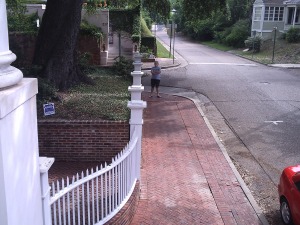 touring at least one house.
touring at least one house.
We started out and Stew decided to criss cross the city. I will just show pictures of the houses because we didn't really know anything about them until we met Don.
On the red brick house with the white pillars, I went up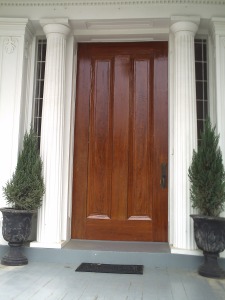
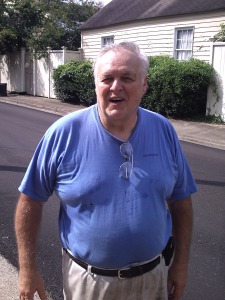
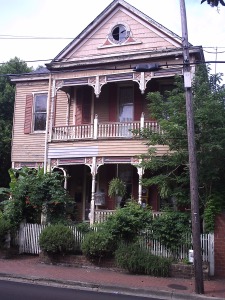
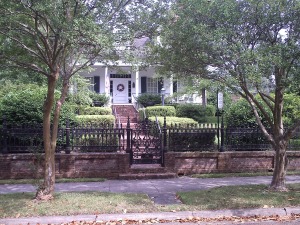 the steps to take a picture of the massive door. One of the things Stewart told me was that the plantation owners had houses on their properties, but they owned homes like these in town for social functions and
the steps to take a picture of the massive door. One of the things Stewart told me was that the plantation owners had houses on their properties, but they owned homes like these in town for social functions and
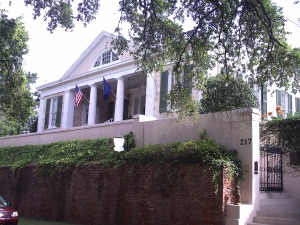 for winter months when crops fell silent. These were built to show their wealth and stature. Of course, back then Negro servants cooked and took care of the children while doing other chores. Many of these homes were built in the late 1700s to the mid 1800s. Today, some are private residences and others are
for winter months when crops fell silent. These were built to show their wealth and stature. Of course, back then Negro servants cooked and took care of the children while doing other chores. Many of these homes were built in the late 1700s to the mid 1800s. Today, some are private residences and others are 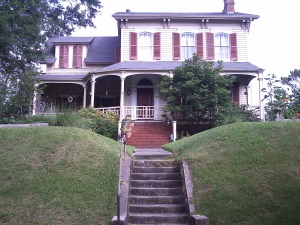 B&Bs.
B&Bs.
The guy in the picture is Don. Just to the right of him is his house. We were still just driving around when I spotted the place. It was ornate in a different sort of way and I could tell it needed a lot of work.
"Hey!" I said. "Let's stop here. I like this place. It's got a certain feel to it. Plus, it's for sale."
"Sure, but what do you care if it's for sale or not?" Point well made. There was no way I could buy it and I didn't have the money anyway.
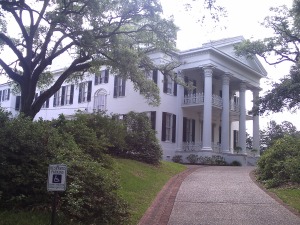 We pulled up to the curb and got out of the car, trusty cameras in hand. Suddenly, I saw some stirring on the front porch. The gentleman walked to the left side of the house, down the steps and over to us.
We pulled up to the curb and got out of the car, trusty cameras in hand. Suddenly, I saw some stirring on the front porch. The gentleman walked to the left side of the house, down the steps and over to us.
"Hello," he said in a friendly tone of voice. We responded. "Are you interested in the house?"
"Well, yes," I said, "but not in buying it. We're from Florida." And with that, he began to tell us of his work as a professor at the University of South Florida.
"In economics," he added. I asked him about property values in Natchez. We talked about how bad it is in Orlando."Well, let me put it this way. Before all this, the house was worth almost $300,000, but today, it's listed for just under $170,000."
"Wow, that's a big drop. I notice you have a few broken windows upstairs, like in the attic."
"We keep the upstairs closed off. I had cancer and I just got done with chemo and radiation. I don't have the energy anymore to do the work. That's why it's for sale."
Stew and I both remarked how good he looked.
"Yeah, and I didn't lose any hair, either."
Stew asked him about places to see. Where are the best 'do not miss' spots in town? He told us a number of things and I was hoping that Stew was paying more attention than me because I couldn't remember it all until he mentioned Dunleith. "Yup, Dunleith is the most photographed house in the country. More so than the White House."
"Really? The White House?"
Most definitely. Well, Stew and I put that place on our list. He said that one was a nice one to tour and so was Longwood. Meanwhile, a car pulled up and a lady got out. We told him it was great meeting him and I told him my name. "It looks like you have a prospect."
"Yes and I'm down to my last flier. I've got to get more printed. I'm Don." I don't remember his last name, but we had firm handshakes between us and said our good byes. He was a true gentleman and I hope he sells his house.
At that point, we decided to take a look at the cemeteries and then swing back to tour one of the homes he suggested.
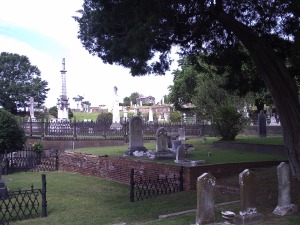 I don't know why I've always had a fascination with cemeteries, but I do. I especially like the above ground crypts like you see in New Orleans. There's a certain eeriness about them. Maybe, it's because I'm on the same level with all those bodies instead of looking down at the ground and seeing grass. Plus, I realize that every body in there was once a living, breathing soul and most of them made some sort of impact on life and those around them. What did they do? Where did they live? What were living conditions like back then? Would we have been friends if we grew up in the same era? Those sorts of questions have always intrigued me. Where are you now? Or are you? I don't have a strange fascination with death, it's just the people who once were. The best cemetery I ever visited was St. Louis #1 in New Orleans. Yes, it's kind of creepy and no, I wouldn't especially want to hang around there at night, but I'm not easily spooked, either.
I don't know why I've always had a fascination with cemeteries, but I do. I especially like the above ground crypts like you see in New Orleans. There's a certain eeriness about them. Maybe, it's because I'm on the same level with all those bodies instead of looking down at the ground and seeing grass. Plus, I realize that every body in there was once a living, breathing soul and most of them made some sort of impact on life and those around them. What did they do? Where did they live? What were living conditions like back then? Would we have been friends if we grew up in the same era? Those sorts of questions have always intrigued me. Where are you now? Or are you? I don't have a strange fascination with death, it's just the people who once were. The best cemetery I ever visited was St. Louis #1 in New Orleans. Yes, it's kind of creepy and no, I wouldn't especially want to hang around there at night, but I'm not easily spooked, either.
It is with dignity for the deceased when I step into their world and where they now reside, body-wise, anyway, and it was with Stewart when we walked through that New Orleans cemetery, so this was appropriate that it would be the two of us again. Natchez has two; the Natchez City Cemetery and the Natchez National Cemetery for veterans. The pictures will give you an idea about how the townspeople respect their dead.
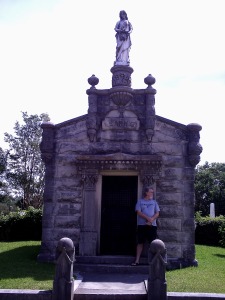
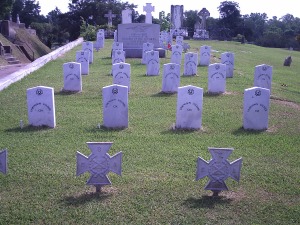
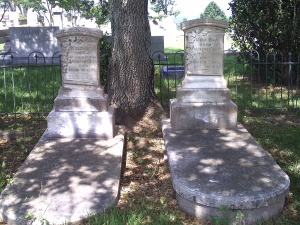 The mausoleum where Stewart is standing had no door, only a metal gate that was chained shut. I poked my head up and into the tomb as far as I could and said a few words. Booooos were more like it. Stew said that when he had done the same thing at another cemetery, his wife got upset with him, like he was disturbing the dead. If I was disturbing anyone, they didn't yell at me to stop. All I heard was a faint echo of my voice. And I sure hope I wasn't rattling any bones.
The mausoleum where Stewart is standing had no door, only a metal gate that was chained shut. I poked my head up and into the tomb as far as I could and said a few words. Booooos were more like it. Stew said that when he had done the same thing at another cemetery, his wife got upset with him, like he was disturbing the dead. If I was disturbing anyone, they didn't yell at me to stop. All I heard was a faint echo of my voice. And I sure hope I wasn't rattling any bones.
The picture with the small tombstones was the final resting place for unknown Confederate soldiers killed during the Civil War. I remembered visiting an old cemetery in Shiloh, Illinois, a few years ago and seeing Union soldiers buried there. I wonder why so many of our boys had to go fight in a senseless war. All wars are senseless to me.
The final picture in the cemetery series was taken because I liked his name. There lies Moses Haas next to his beloved wife, Mina, resting peacefully under a shade tree for all eternity.
After reading names and dates, it was time to move on to the final chapter of our trip to Natchez, to tour one of the houses. We were rather intrigued by Don's mention of the house that's been more photographed than any other, so we decided to take a look at Dunleith.
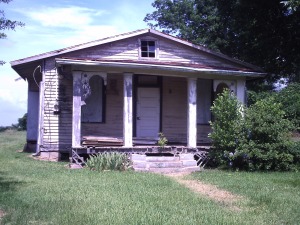 As we started to come back down the hill, we noticed two buildings that, for sure, looked like sharecroppers houses from days gone by. I took pictures of both but I figured one would be enough to give you an idea of what home life might have been like for hard working slaves grueling every day in the hot and humid climes of Misissippi. This was probably a step up to many of them.
As we started to come back down the hill, we noticed two buildings that, for sure, looked like sharecroppers houses from days gone by. I took pictures of both but I figured one would be enough to give you an idea of what home life might have been like for hard working slaves grueling every day in the hot and humid climes of Misissippi. This was probably a step up to many of them.
Dunleith (1) is a very special and grand house. Called Routhland, the original structure was built in the late 1700s by Job Routh and his wife, Ann Miller, but burned to the ground in 1855 after lightning struck one of the chimneys. This house was built in 1856 and how it came to be known as Dunleith is an interesting story and by clicking the numeral one next to the highlighted name, you can read about it. Today, the upstairs and annex are part of a bed and breakfast. The buildings are set on 40 acres in the outskirts of town. Dunleith is a very good example of Greek Revival. 26 Tuscan columns surround the house. I got a kick out of some of the houses I saw in town. Sometimes, you couldn't tell whether you were coming or going since the front and back were just a bold and powerful. I guess, in a sense, it's like the White House because no matter which side you look at, it's just as impressive.
When we got there, we parked toward the back side and entered where room reservations are made. The very accommodating lady told us if we hurry upstairs, out the door and up the rear steps, we could make the tour, ready to start in about 5 minutes. We had already asked her how much it costs.
"Seven dollars, but if you're over fifty-five it's six."
"Bingo! That's us. Do you want us to pay you now?"
"No, you can pay when you're through." That's how trusting people are in the south. We scampered up the stairs and eventually ran into Judy, our tour guide, waiting for us at the back door.
 "Why don't you walk around this porch and meet us at the front door." We obliged her and by the time we got there, she was coming out of the front door.
"Why don't you walk around this porch and meet us at the front door." We obliged her and by the time we got there, she was coming out of the front door.
"Hey," I exclaimed, "you look just like that pretty lady we just met out back!"
"That was my twin sister, Trudy," and with that, she started her tour. Others were sitting on cozy rockers on the shady porch as Judy beckoned us inside. The huge door weighs somewhere in the neighborhood of 800 pounds.
Miss Judy was a delight. She took us through the downstairs rooms and explained in minute detail the intricacies involved as each owner added their personal signatures on interior designs. What was interesting, yet didn't surprise me at all, was the French influence overall. Without adding another thousand words to my account of what we saw and heard, let me just say it's worth the six or seven dollars to tour this magnificent structure. I took several photos inside the house, in spite of the sign clearly stating NO PHOTOGRAPHY INSIDE THE HOUSE, but I had permission from the master tour guide herself.
"This was meant for times before we had those new digital cameras," she said when I asked. "As long as you don't use the flash, it's fine." Unfortunately, I hadn't had a chance to read the instructions, since it was new, and a lot of them didn't turn out right as you will see in my last photo in this Dunleith series.
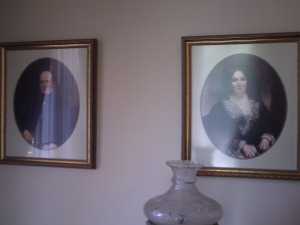 The portraits are of the original owners, Mr. and Mrs. Job Routh, dating from the late 1700s or early 1800s. There was a portrait of a former slave who ended up being a fairly powerful man about town, given that the slave owner recognized his intelligence and sent him to school. There's a unique history to this house and it's well worth reading about. There are several outbuildings. One is a restaurant and it looks similar to a castle. These buildings are thought to be a part of the original house, Routhland.
The portraits are of the original owners, Mr. and Mrs. Job Routh, dating from the late 1700s or early 1800s. There was a portrait of a former slave who ended up being a fairly powerful man about town, given that the slave owner recognized his intelligence and sent him to school. There's a unique history to this house and it's well worth reading about. There are several outbuildings. One is a restaurant and it looks similar to a castle. These buildings are thought to be a part of the original house, Routhland.
One of the stories she told is about horses kept in the basement during the Civil War. Brought there to hide them from the Union soldiers, the owner, Alfred Vidal Davis, used special glasses to get the soldiers drunk. We passed around a book showing the unique design and noticed their rounded bottoms. You see, Davis knew that by serving alcohol in those glasses, the soldiers could not set them down, so he kept pouring and pouring and by the time they got drunk, they left, never finding a horse in sight to pilfer away from him or his plantation. Oh, those dumb Yankees... being outsmarted by Mr. Davis himself. Incidentally, it was Davis who renamed it Dunleith because of his Scottish heritage.
If you look closely at the main picture of the house, you'll notice stairs to nowhere to the left (and in front) of the SUV. What are they, you might wonder. In the days of horse drawn carriages, they helped the ladies step out and down to ground level, and while I'm mentioning carriages...

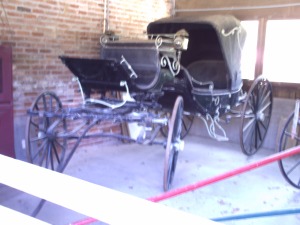 When we finished with the tour, we spent a little time talking to Judy and another couple before going back to pay our tab. I asked Stewart to drive around back to see the restaurant and some of the other buildings. One in particular that Judy had mentioned was the carriage house. You know we have come a long way as a nation when we elect an African American president and a Yankee general's carriage sits on Rebel land because inside that carriage house, Ulysses S. Grant's carriage was on loan. Sadly, the photo I took of it proves how inept I was at taking some of the pictures. I was used to my larger camera. This one was a lot smaller and not as easy to hold still at times. Oh, progress. In any event, that was our last stop except for the Subway shop we hit before leaving town.
When we finished with the tour, we spent a little time talking to Judy and another couple before going back to pay our tab. I asked Stewart to drive around back to see the restaurant and some of the other buildings. One in particular that Judy had mentioned was the carriage house. You know we have come a long way as a nation when we elect an African American president and a Yankee general's carriage sits on Rebel land because inside that carriage house, Ulysses S. Grant's carriage was on loan. Sadly, the photo I took of it proves how inept I was at taking some of the pictures. I was used to my larger camera. This one was a lot smaller and not as easy to hold still at times. Oh, progress. In any event, that was our last stop except for the Subway shop we hit before leaving town.
We decided to take U.S. 98 to where we expected to spend our final night, in Mobile, Alabama. This way, we got to see other small towns and also, to pass through Hattiesburg, near the Alabama border. We wanted to at least get to Mobile so it wouldn't be such a long trip home. Stewart needed to get home by Monday night to let the dogs out since his wife, An, left that morning for Atlanta. About a half hour away from Mobile, we stopped for gas and to find out where we could get the best deal on a room. When I asked the rather beautiful girl behind the counter, she was very helpful. My goodness, she almost looked like the perfect picture of a southern belle until she spoke. Too bad her parents never taught her how to take care of her teeth, but she did send us in the right direction a few miles ahead, just off I-65, which made it very convenient for hopping on I-10 in the morning, our route home. On our last trip, we made up stories of our motel room stays and it was quite funny, with An threatening to leave Stew because of our silly, made-up bedroom antics. Of course, we had to make up something new this time so when he called her from our motel room, he said that we ran out of money and the nice manager of a McDonald's said we could sleep in our car in the parking lot, since they had wi-fi and all and we had brought our laptops. This upset her to no end and when she insisted on us getting a room - in fact, she asked exactly where we were so she could find one and put it on her credit card - he told her he was only kidding and she chose not to believe him. He told her to call the room number. That night, we went to a Japanese steakhouse and met a family from Germany. You know those places where you sit around the table and the chef comes to cook before your eyes? Anyway, they had been in the United States for a year and a half and it was interesting to listen to a Kraut speak English with a Deutsch and Alabama drawl. Yee Häw!
 Well, there's the story of our trip. My only regret is that I never became a dentist, because if I had, I would have asked that girl to leave town and come back to Florida with me. Oh well, next time I want to go to Charleston, South Carolina and Savannah, Georgia. One of these days I might just meet my Scarlett O'Hara.
Well, there's the story of our trip. My only regret is that I never became a dentist, because if I had, I would have asked that girl to leave town and come back to Florida with me. Oh well, next time I want to go to Charleston, South Carolina and Savannah, Georgia. One of these days I might just meet my Scarlett O'Hara.
On second thought, never mind, because here in this real world, I'm getting old. I've got pills to take. Those days are no more than a dream remembered, a part of me now gone with the wind...
The End
To see Stewart's Photos of the trip please click HERE

